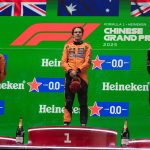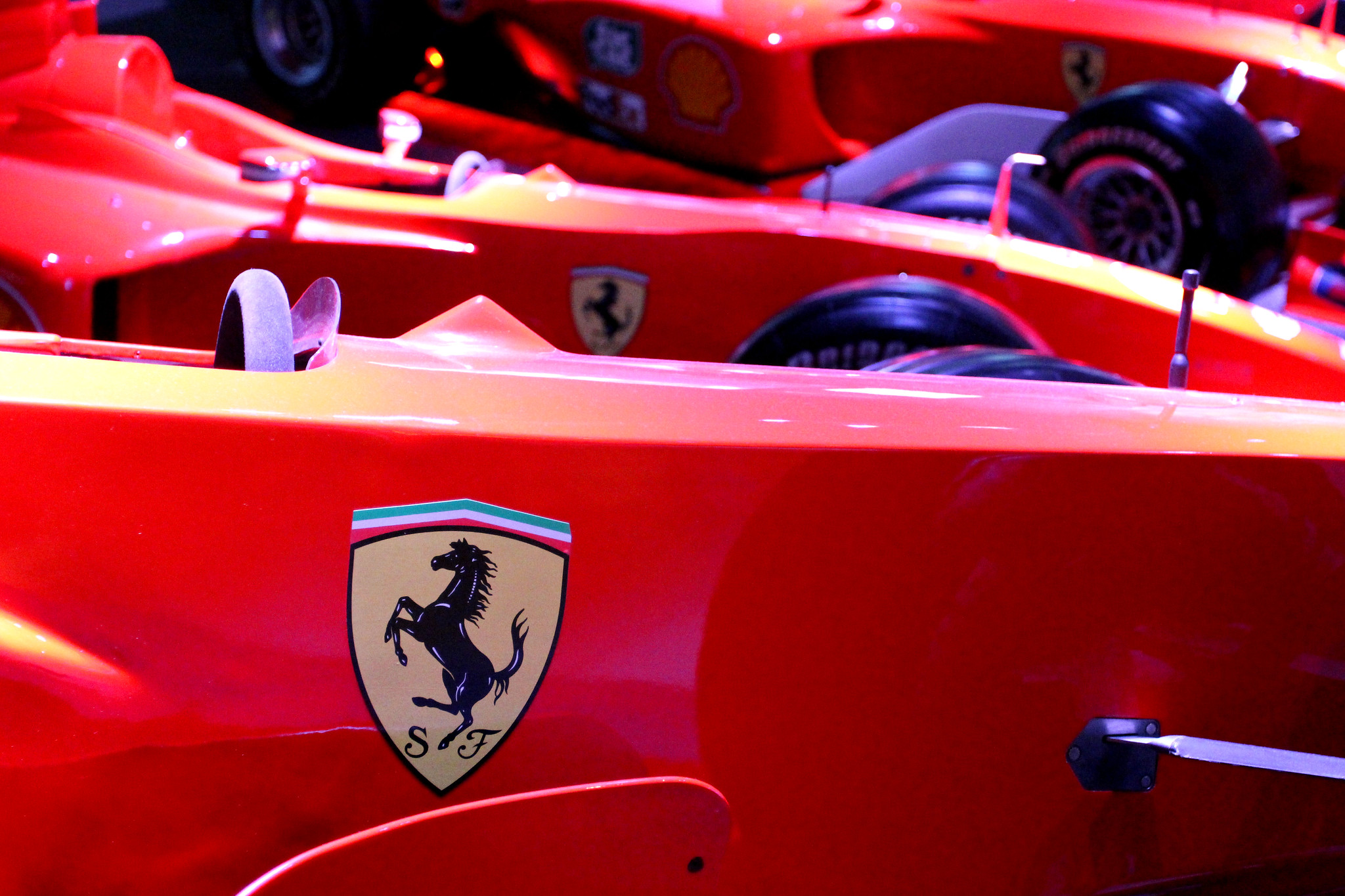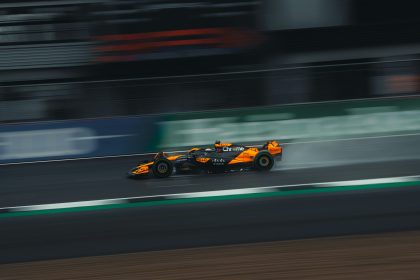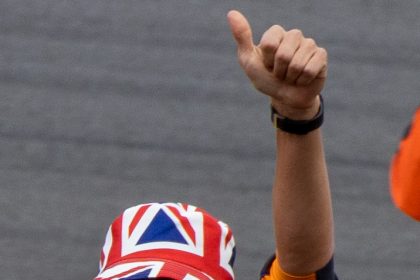If you ever needed proof that Formula 1 is less a sport and more a rolling Greek tragedy, look no further than the events of the 2025 Canadian Grand Prix. In a single weekend, Ferrari managed to trip over its own shoelaces (again), McLaren’s harmonious façade shattered in a shower of carbon fiber, and Mercedes—yes, Mercedes—rose from the ashes like a Brackley-based phoenix. The only thing missing was a Shakespearean chorus, though the Sky Sports F1 Podcast came close.
- When the Prancing Horse Trips: Ferrari’s Latest Masterclass in Self-Sabotage
- The Ghosts of Maranello: A Brief History of Ferrari’s Greatest Hits (and Misses)
- McLaren: From Bromance to Civil War in 66 Laps
- The Anatomy of a Meltdown: Pressure, Perfection, and the Tyranny of Margins
- The Canadian Grand Prix: Where Drama is Tradition
- The Human Cost: Tsunoda’s Struggle and the Weight of Expectation
- The Road Ahead: Upgrades, Upheaval, and the Search for Redemption
Let’s take a deep breath, pour a strong espresso (Ferrari fans, you’ll need it), and dissect the emotional carnage that unfolded in Montreal.
When the Prancing Horse Trips: Ferrari’s Latest Masterclass in Self-Sabotage
There are few things in life as reliable as Ferrari finding new and creative ways to lose. In Montreal, the Scuderia delivered a performance that would make even Jean Todt reach for the grappa. Team principal Fred Vasseur, never one to sugarcoat, summed it up with the kind of brutal honesty that would make Enzo Ferrari proud—if only it weren’t so depressingly familiar.
I think we made too many mistakes collectively from the beginning with the crash in FP1, with the mistake in Quali, with the marmot in the race… And at the end the fight is so tight – I’m not speaking about lap time or race time, I’m speaking about that you can change the position for almost nothing from one weekend to another one.Fred Vasseur
Charles Leclerc’s Friday crash set the tone, costing him all of FP2. The team’s qualifying strategy—gambling on the C6 softs while rivals opted for mediums—backfired spectacularly. In the race, Leclerc was left questioning a two-stop strategy that seemed to have been devised by a committee of sleep-deprived interns. And then, as if to add insult to injury, Lewis Hamilton’s Ferrari picked up floor damage after colliding with a marmot. Yes, a marmot. If you’re keeping score at home, that’s Ferrari: 0, Canadian wildlife: 1.
The result? Leclerc finished fifth, Hamilton sixth, both inheriting positions only after Lando Norris’s late retirement. Ferrari slipped to third in the Constructors’ standings, now 16 points behind Mercedes—a team that, until this weekend, looked about as threatening as a wet baguette.
Read the full Ferrari post-mortem on Formula1.com
The Ghosts of Maranello: A Brief History of Ferrari’s Greatest Hits (and Misses)
If you think this is a new phenomenon, you must be new here. Ferrari’s history is littered with operational blunders and strategic faceplants. From the infamous 2008 Singapore pit stop (fuel hose, anyone?) to the 2010 Abu Dhabi strategy disaster that cost Alonso the title, the Scuderia has made a habit of snatching defeat from the jaws of victory.
In the last decade alone, Ferrari has managed to:
- Lose a championship lead with a start-line crash in Singapore (2017)
- Throw away wins with pit stop and tire strategy errors (2022)
- Celebrate a world title for Felipe Massa in Brazil, only to realize Lewis Hamilton had snatched it at the last corner (2008)
And now, in 2025, they’re flirting with the idea of opening a UK base, as if geography is the problem rather than the endless parade of self-inflicted wounds. Nico Rosberg, never one to miss a chance to stir the pot, put it succinctly:
So I’ve seen a little bit of inner workings there at Ferrari, and you can see that the level of excellence that they’re at is not comparable to the British teams, and especially to someone like Mercedes, in many areas, whether it goes from marketing, to other areas… There’s a couple of ideas that I heard going round. I think Ferrari has been exploring to perhaps open a kind of subsidiary in the UK, because that’s where the F1 ecosystem is.Nico Rosberg
Read the full Rosberg interview on PlanetF1
McLaren: From Bromance to Civil War in 66 Laps
If Ferrari’s woes were predictable, McLaren’s implosion was the stuff of paddock nightmares. For months, the papaya squad has basked in the glow of a resurgent car and a driver pairing that seemed immune to the usual intra-team poison. That illusion shattered in Montreal, where Lando Norris—usually the picture of composure—drove into the back of Oscar Piastri in a desperate, ill-judged lunge for fourth place.
Jolyon Palmer, never one to mince words, called it as he saw it:
It looked to me that it was this feeling of a desperate last chance that led Lando to chase a gap on the inside that was never there and ruin all of the good work of his race. From the outside it looks like one of the more clumsy errors from a title contender, and there’s no denying it is.Jolyon Palmer
The parallels to McLaren’s infamous past are impossible to ignore. Senna vs. Prost, Hamilton vs. Alonso—when McLaren drivers fight for the same piece of tarmac, the results are rarely pretty. In 2011, Hamilton and Button clashed in Montreal; Button went on to win, Hamilton retired. In 2025, Norris’s error cost him 12 points in the championship and handed Piastri his biggest points advantage yet.
Watch the Sky Sports F1 Podcast dissect the McLaren clash
The Anatomy of a Meltdown: Pressure, Perfection, and the Tyranny of Margins
What makes this season so uniquely volatile? In a word: margins. As Vasseur noted, you can change the position for almost nothing from one weekend to another one. The difference between hero and zero is measured in tenths, sometimes hundredths, and the pressure is relentless.
Ferrari’s struggles are not about raw pace—Leclerc and Hamilton have both shown flashes of brilliance—but about execution. Tire choices, pit stops, race management: these are the battlegrounds where championships are won and lost. Mercedes, written off as also-rans just weeks ago, executed a flawless weekend in Montreal and walked away with a win and a double podium.
History tells us that the teams who adapt, who learn from their mistakes, are the ones who survive. Mercedes has made a habit of bouncing back from poor form—after disastrous weekends in Singapore (2015), Spain (2016), and Austria (2018), they returned to winning ways at the very next race. Ferrari, by contrast, seems doomed to repeat its mistakes, each new blunder a pale echo of the last.
The Canadian Grand Prix: Where Drama is Tradition
Montreal has always been a stage for the unexpected. From Gilles Villeneuve’s maiden win in 1978 to Jenson Button’s last-lap heroics in 2011, the Circuit Gilles-Villeneuve is where the script gets thrown out the window. This year was no exception.
George Russell’s victory marked the fourth different winner of the season, and Mercedes rookie Kimi Antonelli became the third youngest podium finisher in F1 history. The Canadian GP’s contract extension to 2035 is a testament to its enduring appeal—a race where the weather, the walls, and the wildlife conspire to keep everyone guessing.
| 2025 Canadian Grand Prix – Top 6 Finishers |
|---|
| 1. George Russell (Mercedes) |
| 2. Max Verstappen (Red Bull) |
| 3. Kimi Antonelli (Mercedes) |
| 4. Oscar Piastri (McLaren) |
| 5. Charles Leclerc (Ferrari) |
| 6. Lewis Hamilton (Ferrari) |
Read the full race report and contract news
The Human Cost: Tsunoda’s Struggle and the Weight of Expectation
Not all heartbreak is reserved for the front-runners. Yuki Tsunoda, now in the Red Bull hot seat, finished a lonely 12th in Montreal, still searching for points and confidence. A 10-place grid penalty for overtaking under red flags set the tone for a weekend that never quite got going.
Still with our team, you want to be as high as possible, but I enjoy this challenge I guess. [In] these moments I’m having a lot of pressure, sometimes I’m not enjoying them that much but it’s part of the time that [is] an opportunity to improve myself and prove myself more.Yuki Tsunoda
For Tsunoda, as for so many before him, Formula 1 is as much a test of character as of speed. The pressure to perform, the scrutiny, the relentless comparison to teammates and legends past—it’s enough to break the strongest spirits. But it’s also what makes the sport so compelling.
Read Tsunoda’s reflections on Formula1.com
The Road Ahead: Upgrades, Upheaval, and the Search for Redemption
As the circus packs up for Austria, the storylines are as tangled as ever. Ferrari promises upgrades, but Vasseur is quick to remind us that there is much more in the execution and what you are getting from the car than the potential of the car itself. McLaren must now manage a simmering rivalry between Norris and Piastri, with the Constructors’ and Drivers’ titles hanging in the balance. Mercedes, emboldened by their Montreal resurgence, will look to build momentum.
And somewhere in the background, the ghosts of F1’s past—Senna and Prost, Schumacher and Villeneuve, Hamilton and Rosberg—whisper reminders that in this sport, nothing is ever truly settled.












